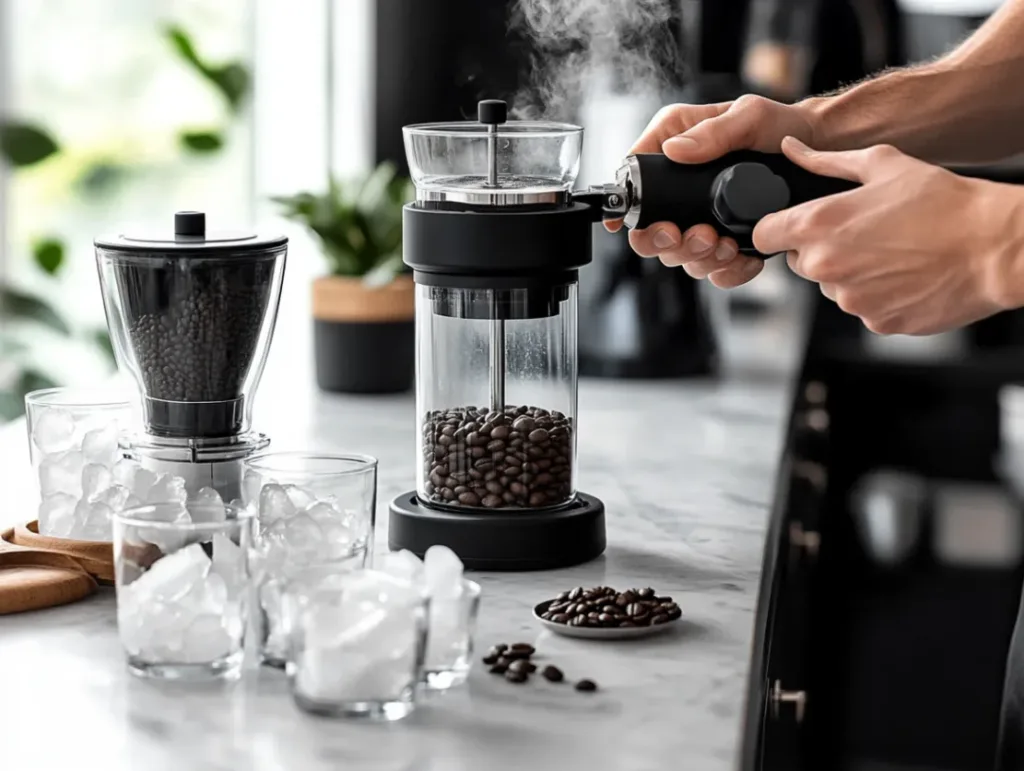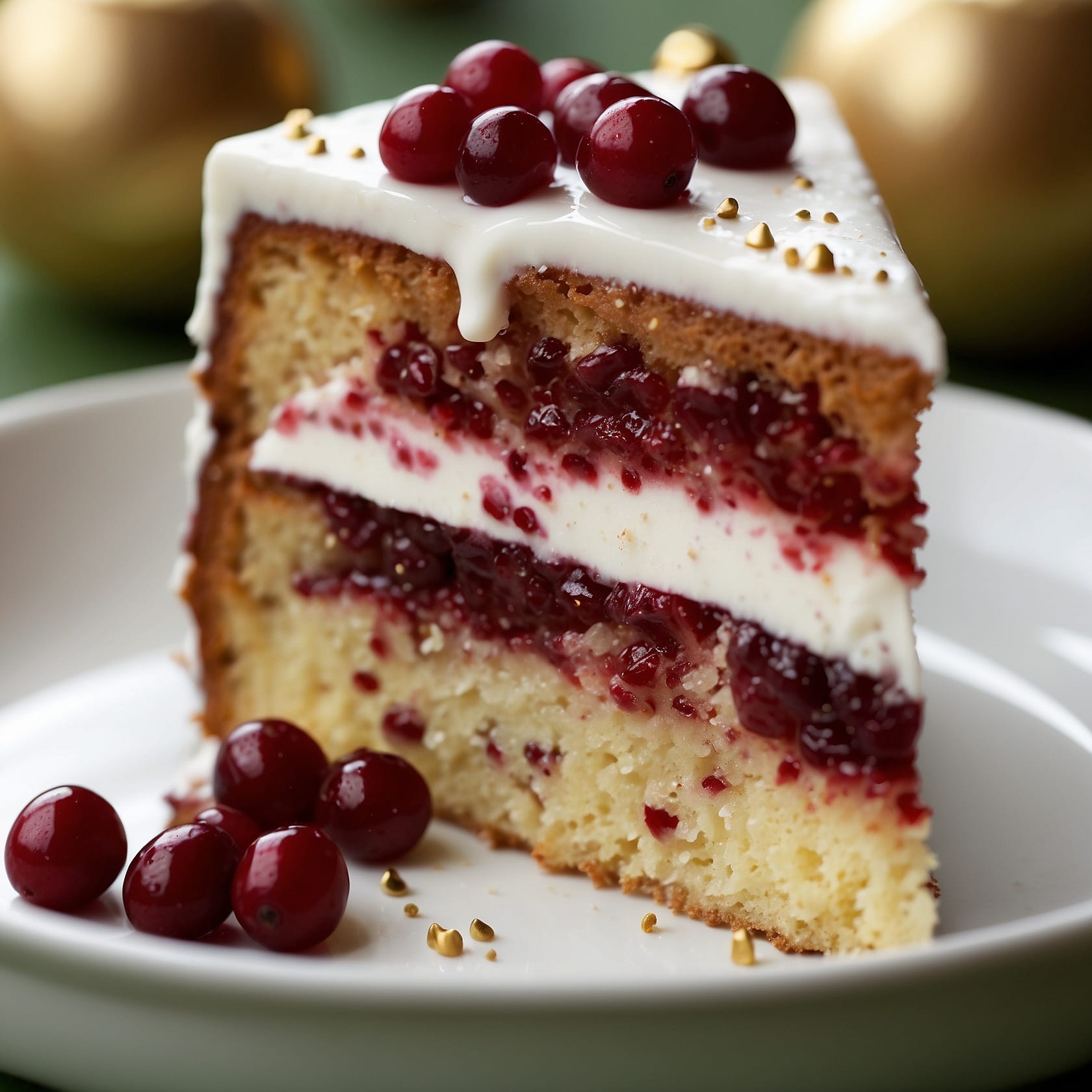Table of Contents
Table of Contents
There’s something magical about that first sip of perfectly crafted iced coffee on a warm morning. As someone who’s been experimenting with coffee recipes for over a decade, I can honestly say that mastering the art of iced coffee has transformed my daily routine. I still remember the summer I discovered cold brew – I was working long hours at a local café, and the barista taught me her secret technique for creating the smoothest, most refreshing iced coffee I’d ever tasted. That moment sparked my passion for creating delicious iced coffee recipes at home.
Iced coffee isn’t just a drink; it’s a gateway to sustained energy, a moment of refreshment, and often the perfect companion to life’s busiest moments. Whether you’re rushing to work, enjoying a lazy weekend morning, or need an afternoon pick-me-up, these easy homemade recipes will revolutionize how you think about your daily caffeine fix. Today, I’m sharing my most treasured iced coffee techniques that have become absolute family favorite recipes in my household.

Refreshing Iced Coffee Recipes to Keep You Energized
Ingredients

Ingredients: Building the Perfect Iced Coffee Foundation
Understanding Key Ingredients and Their Roles
The beauty of exceptional iced coffee lies in understanding how each ingredient contributes to the final masterpiece. Coffee beans form the heart of any great iced coffee recipe, but not all beans perform equally when chilled. Medium to dark roast beans typically work best for iced coffee because they maintain their bold flavors even when diluted with ice. The oils and compounds in these roasts create a rich foundation that won’t disappear under the cooling effect of ice.
Water quality plays a crucial role that many home brewers overlook. Since iced coffee often involves longer brewing times, using filtered water becomes even more important. The minerals in your water directly impact extraction, and poor water quality can leave your iced coffee tasting flat or overly bitter. I always recommend using water that tastes good on its own – if you wouldn’t drink it plain, don’t use it for your coffee.
Ice might seem like a simple addition, but it’s actually a key player in iced coffee preparation. The size, shape, and quality of your ice affects dilution rates and temperature control. Large ice cubes melt slower, preserving your coffee’s strength longer, while smaller cubes chill the drink more quickly but dilute it faster. Understanding this balance helps you create consistent results every time.
Selecting the Best Quality Ingredients
Choosing premium coffee beans transforms ordinary iced coffee into an extraordinary experience. Look for beans with roast dates within two to four weeks of your brewing date – freshness makes an incredible difference in flavor clarity and aroma. Single-origin beans often showcase unique characteristics that shine in cold preparation methods, while blends provide balanced complexity that appeals to various taste preferences.
When selecting beans specifically for iced coffee, consider flavor notes that complement cooling. Chocolate, caramel, and nutty undertones tend to remain prominent when chilled, while bright, acidic notes can sometimes become muted. However, don’t be afraid to experiment – some fruity Ethiopian beans create surprisingly delightful iced coffee with vibrant, refreshing qualities.
Storage is equally important as selection. Keep your coffee beans in an airtight container away from light, heat, and moisture. Whole beans maintain freshness longer than ground coffee, so invest in a quality grinder and grind your beans just before brewing. This small step significantly impacts the final taste of your homemade iced coffee recipes.
Smart Substitutions and Creative Alternatives
Dietary restrictions and personal preferences shouldn’t limit your iced coffee enjoyment. For those avoiding caffeine, decaffeinated beans work wonderfully in these recipes – just ensure you’re using high-quality decaf that maintains rich flavor profiles. Swiss water process decaffeinated beans often provide the best taste experience for iced coffee applications.
Alternative milk options open up exciting flavor possibilities. Oat milk creates incredibly creamy iced coffee with subtle sweetness, while almond milk adds nutty undertones that complement certain bean origins beautifully. Coconut milk brings tropical richness that pairs exceptionally well with darker roasts. Each alternative changes the drink’s character, allowing you to customize your iced coffee experience.
For sweetening alternatives, consider natural options like maple syrup, honey, or agave nectar. These liquid sweeteners dissolve more easily in cold beverages than granulated sugar. Date syrup adds complex sweetness with caramel notes, while stevia provides sweetness without calories. Simple syrup remains the most neutral option and integrates seamlessly into any iced coffee recipe.
Preparation Steps: Mastering the Art of Iced Coffee
Initial Preparation and Essential Setup Tips
Successful iced coffee preparation begins long before you start brewing. Proper planning ensures smooth execution and consistently delicious results. Start by cleaning all equipment thoroughly – coffee oils can turn rancid and negatively impact flavor, especially in cold brewing methods where extraction times are extended. This includes your grinder, brewing vessel, filters, and serving containers.
Temperature control throughout the preparation process significantly impacts final quality. If you’re using hot brewing methods for iced coffee, allow adequate cooling time before adding ice to prevent immediate dilution. Alternatively, brewing at room temperature or using cold brewing techniques eliminates this concern entirely. Prepare your ice in advance, and consider making coffee ice cubes from previously brewed coffee to prevent dilution while maintaining flavor strength.
Organization makes the difference between stressful preparation and enjoyable coffee crafting. Measure your ingredients beforehand, set up your workspace logically, and have all tools within easy reach. This preparation allows you to focus on technique rather than scrambling for supplies, resulting in better iced coffee and a more pleasant brewing experience.
Step-by-Step Instructions with Professional Secrets
Classic Hot-Brewed Iced Coffee Method:
Begin with a coffee-to-water ratio of 1:15, but brew it slightly stronger than usual since ice will dilute the final product. Heat water to 200°F (just off boiling), and pour it over medium-coarse ground coffee using your preferred brewing method. Pour-over, French press, and drip methods all work excellently for this technique.
Here’s my secret: immediately after brewing, add a small amount of hot coffee to your serving glass to warm it slightly. This prevents thermal shock when you add the remaining hot coffee, which can sometimes create off-flavors. After 30 seconds, dump out this warming coffee and add your ice to the glass.
Pour the freshly brewed coffee over the ice slowly, allowing each addition to cool gradually. This technique, called “flash cooling,” preserves the coffee’s bright flavors while quickly bringing it to serving temperature. Stir gently to ensure even cooling throughout the drink.
Cold Brew Concentrate Method:
For cold brew, combine coarsely ground coffee with room temperature water using a 1:4 ratio for concentrate. Mix thoroughly to ensure all grounds are saturated, then cover and refrigerate for 12-24 hours. Longer steeping times extract more caffeine and create deeper flavors, but can also introduce bitter compounds if extended too far.
Strain the mixture through a fine-mesh sieve lined with cheesecloth or a coffee filter. This double-filtration creates clean, smooth concentrate that serves as your iced coffee base. The concentrate keeps refrigerated for up to two weeks, making it perfect for quick iced coffee preparation.
To serve, dilute the concentrate with cold water, milk, or alternative milk using a 1:1 ratio for strong iced coffee, or 1:2 for a milder drink. Add ice and customize with sweeteners or flavorings as desired.
Avoiding Common Mistakes and Troubleshooting
The biggest mistake in iced coffee preparation is using the wrong grind size. Too fine, and you’ll over-extract, creating bitter, harsh flavors that become more pronounced when chilled. Too coarse, and you’ll under-extract, resulting in weak, sour iced coffee. Medium-coarse grinds work best for most iced coffee methods, resembling coarse sea salt in texture.
Temperature shock is another common pitfall. Adding hot coffee directly to ice can crack glasses and create uneven cooling that affects flavor extraction. Always use tempered glassware or allow coffee to cool slightly before adding ice. This patience pays off in both safety and taste quality.
Over-dilution ruins many otherwise perfect iced coffee attempts. Combat this by using coffee ice cubes, starting with less ice and adding more as needed, or brewing stronger coffee to account for expected dilution. Remember, you can always add more water or ice, but you can’t remove it once it’s added.
Serving and Final Touches: Elevating Your Iced Coffee Experience
Creative Presentation Ideas That Impress
Presentation transforms simple iced coffee into an Instagram-worthy treat that delights both eyes and palate. Layer different components for visual appeal – start with milk or cream at the bottom, slowly add coffee to create distinct layers, then top with whipped cream or foam for textural contrast. This technique works especially well with clear glasses that showcase the beautiful stratification.
Garnishes add both visual interest and complementary flavors. Fresh mint sprigs provide aromatic appeal and cooling sensation, while cinnamon sticks serve as both stirrer and spice infuser. Orange or lemon peels express essential oils that enhance coffee’s natural brightness, and a light dusting of cocoa powder or cinnamon adds elegant finishing touches.
Ice presentation deserves attention too. Large, clear ice spheres or cubes look sophisticated and melt slowly. Flavored ice cubes made from coffee, flavored syrups, or even frozen milk create interactive drinks that evolve as they melt. Coffee ice cubes prevent dilution while maintaining flavor intensity throughout the drinking experience.
Perfect Pairings and Complementary Treats
Iced coffee pairs beautifully with both sweet and savory accompaniments. For breakfast, consider serving alongside buttery croissants, fresh fruit, or yogurt parfaits. The coffee’s boldness complements creamy textures while its acidity cuts through rich foods beautifully.
Afternoon iced coffee sessions call for different pairings. Light pastries, cookies, or small sandwiches provide satisfying accompaniments without overwhelming the coffee’s delicate flavors. Chocolate-based treats create classic combinations, while fruit-forward desserts offer refreshing contrasts that cleanse the palate between sips.
Seasonal pairings keep iced coffee interesting year-round. Summer calls for fresh berries, light salads, and grilled foods that benefit from coffee’s complexity. Fall iced coffee pairs wonderfully with spiced treats, caramel desserts, and hearty breakfast items that bridge the gap between seasons.
Storage Solutions and Make-Ahead Strategies
Proper storage extends your iced coffee enjoyment and simplifies daily preparation. Cold brew concentrate stores beautifully in the refrigerator for up to two weeks when kept in airtight containers. Glass jars work excellently, as they don’t absorb odors or flavors that might compromise future batches.
Brewed iced coffee tastes best when consumed within 24 hours, but proper storage can extend this window. Keep prepared iced coffee refrigerated in sealed containers, and avoid leaving it at room temperature for extended periods. Adding acidic elements like lemon juice can help preserve freshness slightly longer.
Pre-made coffee ice cubes are game-changers for busy schedules. Brew extra coffee, cool it completely, then freeze in ice cube trays. These cubes provide instant iced coffee without dilution and keep for several months in the freezer. Consider making different strength cubes – some regular, some concentrated – for customizable drink preparation.
 DINNER
DINNER LUNCH
LUNCH Desserts
Desserts BREAKFAST
BREAKFASTFor more amazing recipes, be sure to check out our other sections to explore a variety of ideas that will enrich your cooking experience. Each section offers its own unique flavors to ensure a delightful culinary journey:
Easy and Quick Recipes: A collection of dishes that guarantee delicious meals with minimal effort and time.
Healthy Recipes: Discover healthy and delicious options that fit your lifestyle.
Desserts: A diverse selection of sweets that will add a special touch of sweetness to your table.
Lunch Recipes: Tasty lunch ideas that you can easily prepare to delight your family.
Dinner Recipes: Delicious and easy-to-make recipes that will make your dinner a memorable occasion.

Frequently Asked Questions
Q: How long does cold brew concentrate last in the refrigerator? A: Cold brew concentrate maintains optimal flavor for up to two weeks when stored in an airtight container in the refrigerator. The concentrate’s acidity and lack of heat processing help preserve freshness longer than regular brewed coffee. However, for the best taste experience, I recommend using it within 7-10 days. Signs that your cold brew has gone bad include sour or off odors, mold growth, or a noticeably bitter taste that wasn’t present initially.
Q: What’s the best coffee-to-water ratio for iced coffee? A: The ideal ratio depends on your brewing method and taste preferences. For hot-brewed iced coffee, use a 1:15 ratio (slightly stronger than regular hot coffee) to account for ice dilution. For cold brew concentrate, I recommend a 1:4 ratio of coffee to water, then dilute the concentrate 1:1 or 1:2 with water or milk when serving. These ratios create balanced, flavorful iced coffee that isn’t too weak or overwhelmingly strong.
Q: Can I use regular hot coffee that’s been cooled down for iced coffee? A: Yes, but with important caveats. Coffee that’s been sitting at room temperature for more than 2 hours can develop off-flavors and potentially harmful bacteria. If you’re cooling hot coffee for iced preparation, do so quickly using an ice bath or by refrigerating immediately after brewing. However, coffee specifically brewed for iced consumption using proper techniques will always taste superior to reheated or cooled regular coffee.
Q: Why does my iced coffee taste bitter or sour? A: Bitter iced coffee usually results from over-extraction caused by grinding too fine, steeping too long, or using water that’s too hot. Sour iced coffee typically indicates under-extraction from grinding too coarse, insufficient steeping time, or water that’s too cool. Adjust your grind size, brewing time, and water temperature systematically until you achieve the balanced flavor you prefer. Quality beans and proper ratios also significantly impact taste.
Q: What’s the difference between iced coffee and cold brew? A: Iced coffee refers to any coffee served cold, including hot-brewed coffee that’s been cooled and poured over ice. Cold brew specifically refers to coffee made by steeping coarsely ground beans in room temperature or cold water for 12-24 hours. Cold brew typically has lower acidity, smoother flavor, and less bitterness than hot-brewed iced coffee. Cold brew also contains more caffeine per serving and can be made as a concentrate for convenience.
Conclusion: Your Journey to Iced Coffee Mastery
Creating exceptional iced coffee at home isn’t just about following recipes – it’s about understanding the principles that make each cup special and adapting them to your unique preferences. These techniques have transformed countless mornings in my kitchen, and I’m confident they’ll do the same for yours. The beauty of homemade iced coffee lies in its versatility and the personal satisfaction that comes from crafting something delicious with your own hands.
Remember, the best iced coffee recipe is the one you’ll actually make consistently. Start with the methods that appeal most to you, experiment with different beans and flavor combinations, and don’t be afraid to adjust ratios and techniques until you discover your perfect cup. Every coffee lover’s journey is unique, and part of the joy comes from the discovery process itself.
I’d love to hear about your iced coffee adventures! Share your favorite variations, creative additions, or any questions that arise as you explore these recipes. Coffee brings people together, and there’s nothing more satisfying than sharing a perfectly crafted iced coffee with someone special. Here’s to many refreshing, energizing cups ahead – happy brewing!
Image Generation Descriptions
Image 1 – Top-down shot: A beautifully styled overhead view of three different iced coffee variations in clear glasses on a rustic wooden table. Show one classic black iced coffee with large ice cubes, one creamy latte-style iced coffee with distinct layers, and one cold brew with milk creating artistic swirls. Include scattered coffee beans, a vintage spoon, fresh mint garnish, and natural morning lighting streaming across the scene.
Image 2 – Close-up detail: An extreme close-up macro shot focusing on coffee being poured over ice cubes in a clear glass, capturing the exact moment of impact where the coffee creates beautiful splashes and bubbles around crystal-clear ice. Show the rich, dark coffee color contrasting against the transparent ice, with visible coffee oils creating an appetizing sheen on the surface.
Image 3 – Action preparation shot: A dynamic kitchen scene showing hands grinding fresh coffee beans with a manual grinder in the foreground, with a French press, measuring cups, and ice-filled glasses arranged on a marble countertop. Capture the brewing process in action with steam rising from hot water, coffee grounds being measured, and the organized preparation setup that shows the care and attention going into the iced coffee creation process.
